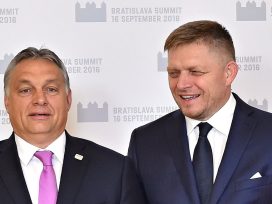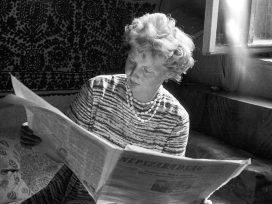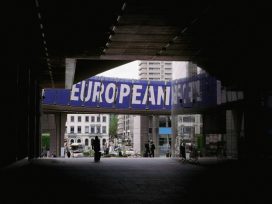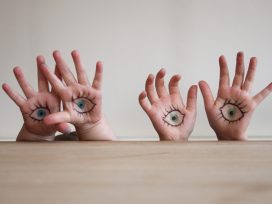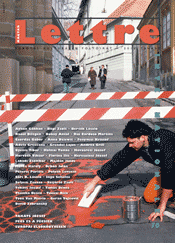 Nobody knows what the city of Pécs is called in Latvian, much less how its name is spelled. Latvians stubbornly refuse to leave foreign words as they are, especially if the letters have diacritical marks – that is, diacritical marks not acceptable in Latvian. Even though Latvian diacritical letters are among the strangest in the world.
Nobody knows what the city of Pécs is called in Latvian, much less how its name is spelled. Latvians stubbornly refuse to leave foreign words as they are, especially if the letters have diacritical marks – that is, diacritical marks not acceptable in Latvian. Even though Latvian diacritical letters are among the strangest in the world.
Latvians try to write place names and even people’s names in a way that reflects how the words would look if their pronunciation were written out in Latvian. Even in cases where the alphabet, Latin, is the same. And, in choosing among various possibilities, they violently bestow upon the words an arbitrarily selected ending that happens to conform theoretically to the rules of Latvian grammar. What to do if the relationship between pronunciation and spelling becomes something more than a question of linguistics? For instance, what about those Russians who complete all of the necessary exams in order to become Latvian citizens, and receive, in return, a passport that does not include their name in their native tongue but, instead, a Latvianized parody of their name, turning them into strangers to their own mothers? If conversation turns to these matters, Latvians will quickly change the subject. It’s not easy to be a small nation that doesn’t want to learn from its own mistakes or from the mistakes of others. And in this respect, Latvians are unfortunately not the only ones unfamiliar with the universal maxim “Do unto others as you would have them do unto you.”
It is human nature to create complications for oneself and then heroically defeat them. The only thing more incredible than the diversity of languages and cultures in the world is our ability to understand one another – in spite of this diversity. That’s why it’s possible to write about two cities without even knowing how to correctly name them. Let’s assume they are called simply K. and P.
What can we learn about a city in the short span of a single day? Almost nothing. One may learn much more about oneself. More precisely, about the feeling that the city engenders. An hour-long walk through the old city and a modern neighborhood; a museum (if there is one) chosen on good faith; a chance conversation with a local; and food (or drink) in a local public dining (or drinking) establishment (there will surely be one of those). And you may say with certainty that you’ve been to the city.
I was in P. for longer than was needed to achieve this feeling. My sense of P., along with a couple dozen photographs hidden right here in the hard drive of my laptop, beneath my right palm, provide enough of a basis for me to write about P. without feeling like a charlatan. But I can’t.
For every thought devoted to P., ten thoughts about K. come to mind. It is not only my hometown. It was not only one of the most famous mineral-water and mud-bath resorts in the Russian empire, in the independent Latvian state, and, later, in the Soviet Union, which was formed, subsisted, and flourished in the middle of a swampy forest, several kilometres from the sea shore. It is not only a place that inspired me to write a book. It is even more interesting that all this: it is a city that doesn’t exist.
For many years, K. was a separate city; but during the Soviet occupation, it became a section of the newly established city of Jurmala. And that’s not all: in the 1990s, after the regaining of Latvia independence, the decline in the purchasing power of local citizens and the citizens of neighbouring companies, as well as the dreadful quality of services, caused the K. resort to fall into ruin. Literally. Along with many structures and monuments – the majority of which had earned precisely this fate.
The most striking symbol of P. that I can recall is the monument of the cavalryman, in the central square. Though K. has ten-times fewer residents that P., and was only established in 1838, there were dozens of statures, monuments, and memorials in the city during my childhood. Let’s begin with the oldest.
The monument to Russian soldiers who were killed during the First World War in the vicinity of K. Next to a charming and, according to many, particularly holy little orthodox church, in a park. As I have been blessed with slight extra-sensory powers, I may confirm the presence of this special aura. The monument is still intact. Literally a few meters away are the Soldiers Cemetery and an obelisk in memory of those who fell during the Great Patriotic War. Fierce battles took place in the vicinity of K. during both World Wars. Undischarged pistol and machine-gun bullets have been perfectly preserved in the sandy earth of the pine forest. When I was at school, this ammunition was a valuable trading object for us children.
Let’s continue. A monument to the doctors who founded the K. resort. Look in the park near Little Island of Love. It is shaped like a tree trunk, with a snake entwined around it; in place of branches are the names of the resort’s directors. The monument is still intact. Partially.
A toad. A spring enclosed within a waist-high monument. The spring dried up, possibility as a result of the construction of the monument. I haven’t been able to find its real location, but I know that its remains are now somewhere in the woods.
A lizard. The toad’s lucky sister. Next to the road that connects K. with the sea, mineral water still flows beneath a glass cover located inside a pavilion decorated with wood carvings; the water then runs under the belly of the half-meter-high sculpture of the lizard and into a little pool, shaped like a bowl and dug into the ground. After that, it courses into a stream, or, more precisely, a brook, called Versupite, which runs through K. My mother told me that when I was a child, I would say that the lizard was peeing. The yellowish water has a distinct smell of hydrogen sulfide. We used to call that the smell of rotten eggs, but I doubt any readers these days have had the pleasure of personally experiencing the rotting process of eggs. The lizard’s water supposedly has the power to preserve the youth of those people who wash their face with it. Based on my experience, this legend has been confirmed one hundred per cent, at least for the time being.
During the years of Soviet rule, vacationers would throw coins into the pavilion’s reservoir. The boys of K. regularly climbed down into the shallow stone well, in order to collect the free money, which had almost instantly turned black in the hydrogen-sulfide-rich water. The coins were polished with sand until they were shiny again. Then the children feasted on ice cream. I was too timid, so I only watched.
“Folk Youth and Folk Maiden” was another mineral spring, almost next to the lizard, and flowed from a borehole instead of naturally. This made it taste more like store-bought mineral water. As a child, whenever I rode my bike through the park, I would often stop and drink from this two-and-a-half-meter-high sculptural formation, which had a water fountain that looked like a sort of kitchen sink on both the youth’s and the maiden’s side. Since I usually rode with friends, a favourite joke was to stop up the nozzle with your finger at the exact moment when someone on the other side was trying to drink. The doubled pressure would shoot a jet of water into the person’s mouth with such force that he would have to sneeze it out his nose. The sculptural formation has been preserved. Water hasn’t flowed from it for twenty years.
Amongst the flowerbeds by the train station stood a stately, moustachioed man, dressed in a Red Army greatcoat and a pointy cap, holding a sword’s scabbard behind his back. The man was Janis Fabriciuss, a commander of the Latvian Red Riflemen who fought on the Bolshevik’s side during the October Revolution. In the 1980s, half of the monument’s sword mysteriously disappeared. Though the Soviets were still in power, somebody probably decided that it would be easier to get rid of the entire monument than to fix the sword.
Sergei Kirov stood at full height next to my school. This statue’s most remarkable feature was the gap between his legs, which allowed you to hide behind the monument and observe what was happening on the other side. After the first snowfall, schoolchildren would usually pelt Kirov with snowballs from head to toe, symbolically re-enacting the events of 1 December 1934, when, following the secret orders of Stalin, Leonid Nikolaev killed Kirov, shooting him in the back of the neck. Kirov disappeared from the yard in front of the school sometime in the late 1980s or early 1990s.
Our house was and is on the street named after Pushkin. The street’s only connection with Russia’s greatest poet was the small bust set up in the flowerbeds on the other side of the road. Pushkin regularly changed his appearance: whenever renovations were made to the sanatorium next door, the bust was repainted with the leftover radiator paint. The time of the bust’s disappearance was approximately the same as Kirov’s.
There is still a tiny mermaid lounging next to the long-defunct medical centre of the resort. I have no idea what relation the mermaid has to K. – except the coincidence that a mermaid lives in water, and water flows through K.’s springs. But on the other side of this same medical centre sits the scientist Pavlov – the reflex-system researcher and Nobel laureate whose experiments on the stomachs of live dogs ruined his karma so badly that he has now been left without a nose. Not to mention the repulsive acts once performed on the monument by my peers, who would crawl into Pavlov’s lap, stand up, and press their hips to the old scientist’s face, in imitation of oral sex. A million laughs!
At the end of the longest path in the park, in the middle of a large field, the famous writers Rainis and Gorky could be seen together. I don’t remember which one of them was standing and which was sitting. Interestingly enough, the Latvian poet Rainis never met the Russian storm-finch, Maxim Gorky. There’s a rumour that the monument was erected in honour of the men’s intention to meet someday. The fate of their intention matched the fate of the monument.
The town of K. had a total of two Lenins. This was probably because the half-a-dozen sanatoriums (even more, if you count the buildings of the individual blocs) had so many vacationers from the wide expanse of the Soviet Union that, if they all decided simultaneously to go see Vladimir Ilyich, there wouldn’t be enough room for them all in front of a single monument. The reserve Lenin was only three-hundred-meters away from the slightly taller, main Lenin. In addition, the reserve Lenin, as it was of lesser importance, had probably been made of poorer-quality material, because it began to decay in the 1980s. Instead of repairing the monument, somebody built a wooden box around it. After a while, perplexing anti-Soviet rumours began to circulate that Lenin wasn’t in the box at all! That’s why the pedestal and the box disappeared completely one fine evening. The main Lenin didn’t last much longer. When Latvia passed the declaration of independence, the monument was cleared away at the first available opportunity.
But the most intriguing K. legend about monuments concerns the statue of Stalin. I’ve heard from several people that, in 1956, when Khrushchev unmasked the “exaggerations” engendered by Stalin’s cult of personality, the statue of Stalin, erected after the war, was dismantled and transported three-kilometres away to Melnezers Lake. There, the monument was floated out to the middle of the lake and sunk. It’s not clear how this was possible, because there were neither ships nor rafts in the tiny lake, and I doubt whether anyone would transport pontoons dozens of kilometres only to sink something a little more majestically. Yet I’ve heard from these same folks that, for a long time after this, many people swimming in the lake had supposedly been able to feel Stalin’s head with their feet, and had even succeeded in standing atop the sunken statue. To be honest, I’ve never met anyone who had actually done this himself. But perhaps as the publicly available underwater-locating devices become more advanced, some enthusiast will furnish us with an unexpected surprise. In subsequent years, Stalin’s place was occupied by the main Lenin.
That’s basically what I wanted to tell the residents of P., and anyone else, about the first thing that comes to mind when comparing P. with K. The fates of both cities have been very different in recent years, but P. definitely has its share of legends too, which aren’t written in the history books and which the tour guides don’t talk about. Perhaps some of them are very similar. Because if you pick up a globe, you’ll find that we are right next one another.
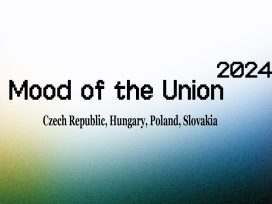
 Nobody knows what the city of Pécs is called in Latvian, much less how its name is spelled. Latvians stubbornly refuse to leave foreign words as they are, especially if the letters have diacritical marks – that is, diacritical marks not acceptable in Latvian. Even though Latvian diacritical letters are among the strangest in the world.
Nobody knows what the city of Pécs is called in Latvian, much less how its name is spelled. Latvians stubbornly refuse to leave foreign words as they are, especially if the letters have diacritical marks – that is, diacritical marks not acceptable in Latvian. Even though Latvian diacritical letters are among the strangest in the world.

